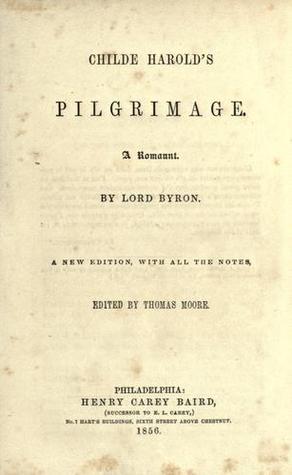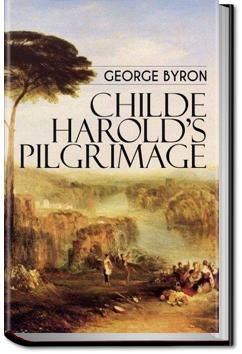“Childe Harold’s Pilgrimage” is one of the long poems in the hands of Lord Byron. The poem has been published between 1812 to 1818.
People use to say this poem has been written dedicated to Lady Charlotte Harley. Here, the poet refers to this poem as ‘Lanthe’. The narrative poem describes the story of the travel of a young man.
Childe Harold’s Pilgrimage Essay
This poem is divided into four parts and Lord Byron calls them “Canto”. The term Childe has been taken from a medieval title that has been written for a young man who was a candidate of Knighthood.
Theme of Childe Harold’s Pilgrimage
The main theme of this poem is nature. Here, nature can be a heaven of liberty that the poet himself says.
Childe Harold’s Pilgrimage Tone
Though a melancholic tone has been shown over the poem by Byron. According to the Romantic style here the protagonist is being alienated from society.
And he is finding the liberty. Harold is the protagonist of the poem who feels free to nature and finding heaven within it.
Childe Harold’s Pilgrimage Summary
The narrative poem talks about the journey of Childe Harold. Here at the beginning he is going outside of his native land and goes to Portugal.
Later he Visited Venice, Switzerland, Alps, ocean, Belgium, Albania. Throughout this poem, Harold takes references to History and makes the Pilgrimage unique.
Though the last part, Harold will be dead in Italy. This will bring melancholy to the readers.
Childe Harold’s Pilgrimage Analysis
Childe Harold’s Pilgrimage Analysis Canto 1
Canto 1: When Canto 1 begins, the readers can get to know about Harold’s life. Harold is an English nobleman who was living in his country and finding life.
So, he left his house to visit other countries. When Childe Harold went out he never has family, friends, or any social bonding with people.
Meaning of Childe Harold’s Pilgrimage
The first time, he went to Portugal and visited the battlefield where armies of Napoleon were clashed with British and Spanish. Now Harold takes the old historical and political references.
The images Peninsular War is coming out from this segment. Here, he also talking about them who were dead. Many of them were fighting for getting liberty.
Then Harold went to Spain. Here, he finds bullfighting and he gives description to that. The songs, festivals were going around him that he had written in the form of a poem.

But still, the poet’s description is a bit of melancholic. From somewhere he takes pain for himself and nobody knows about it.
Childe Harold’s Pilgrimage Canto 2 Analysis
Canto 2: At the beginning of Canto 2, the poet is saying Harold is traveling in Greece and then, Albania. Greek is very much related to mythology so now Harold is invoking the goddess Athena.
In the first and second stanzas, Harold is explaining about the wealth of Greece. Suddenly from the Romantic imagination, he goes to Classical time and talks about myths.
So, the Athenian culture has been shown more and more. The treasure of Greece, Parthenon’s structure are highlighted here.
Childe Harold’s Pilgrimage Famous Quotes
“Then stirs the feeling infinite, so felt
In solitude, where we are least alone.”
Now after talking about these facts he directly goes to Socrates, who was a classical man. He is mourning for the loss of this nobleman.
He further mourning for his dead friend John Eideston whom Harold lost. Then Harold talks about the classical violence that had been made. And it got destructed.
In Canto 2, Lord Byron described the classical time in an authentic way that takes the attention of the readers.
After that, poet also describes the mysterious land of Albania. And after that Canto 2 ends.

Form Childe Harold’s Pilgrimage Canto 3
Canto 3. Here, Harold is traveling in Belgium, Switzerland and the Alps. In this canto, the readers will be able to see his own voice within Harold.
Because he is talking about her daughter, Ada whom he had seen for many years. This is also melancholic that provokes love for his daughter.
“and what is writ, is writ,
Would it were worthier! but I am not now
That which I have been”
After that, Byron again says about Napoleon because in Belgium he defeated. So, most of the time he takes the references of History and politics, Social background.
He is being retouched with the society perhaps talking on these facts. Here he is finding nature as his true friend. Nature takes a big role here. He is surrendering himself in the hands of nature and trying to communicate with desert, forest, hills, ocean.
Now he is visiting Germany and gains hope from nature. His feelings towards nature are getting bolder.
Though he never stopped his traveling. Alps mountain reminds him of the human spirit. The cold air makes him free.
After so much melancholy Harold now finding peace and also get the meaning of life. In search of them, he was traveling and now he changes his tone of writing.
Cantor 4. This is the last canto of this poem. Here, Harold is in Italy. At first, he visiting Venice. The beauty of Harold’s spirit is charmed.
“The moon is up, and yet it is not night,
The sun as yet divides the day with her.”
Childe Harold’s Pilgrimage Canto 4 Theme
After visiting Venice Harold goes gentle to Rome. But the story ends here because Harold is getting died here.
Baron is saying here that Harold had a love for his country and he has died in foreign his soul will be back to England and he will be remembered.
Childe Harold’s Pilgrimage Apostrophe to the Ocean Analysis
The conclusion is being created with an apostrophe. He addresses the ocean as the human power that can never be destroyed.
Review of Childe Harold’s Pilgrimage
This piece gets the critical attention of the critics and this poem is noted as different because belonging from the age of Romantic Age he talks about something more glorious. So, this is a perfect work by Lord Byron.
Important Questions and Answers that People Ask
What is the main idea of Childe Harold’s Pilgrimage?
The main idea is to let the readers remembered these historical facts and to show sorrow for the destruction.
What is the tone of Childe Harold’s Pilgrimage?
Several tones that have been used. These are melancholic tone, tone of love for nature, nostalgic tone.
Who is the hero of Childe Harold?
Here, nature becomes the hero of Childe Harold.
What kind of poem Childe Harold Pilgrimage?
It is a long narrative poem by Lord Byron.
Why does the speaker in Childe Harold’s Pilgrimage enjoy spending time by the deep sea?
The speaker enjoys spending time with the “deep sea” because he enjoys the way it connects with him.